
Le Velorail du Perigord Vert, near Thiviers
Pedal your way through the countryside on this unique and entertaining mode of transport that will give you a bit of exercise as you enjoy the scenery.

© Monoir des Cedres Hotel, Rouffignac-Saint-Cemin
Authentic charm & contemporary comforts in old Manoir
A peaceful retreat, with well equipped, bright comforting rooms. The hotel is placed in a beautiful park and Rouffignac is ideally situated at the north-west of the Black Pèrigord, an area steeped in history and has some of the finest gastronomic experiences available in Dordogne.
There are a total of 14 rooms in the hotels outbuildings and 9 rooms in the "Great House ". Anything from a basic twin to a family suite can be made available and tailored to your needs.
For a small fee, each morning you can enjoy a continental breakfast buffet to set you up for your day. There is also the option to have lunch or dinner in the hotels restaurant, where you can experience modern interpretations of classic French dishes, utilising much of the produce that the region is rightly famous for.
A clean, fenced off pool with surrounding wooden decking sits in the grounds of the hotel. Parasols, deck chairs and tables make in an ideal place to soak up your surroundings or go for a dip.
All children are welcome, and one under the age of 2 can stay for free when using an existing bed. The hotel is also well equipped with a playground and games room.

Pedal your way through the countryside on this unique and entertaining mode of transport that will give you a bit of exercise as you enjoy the scenery.
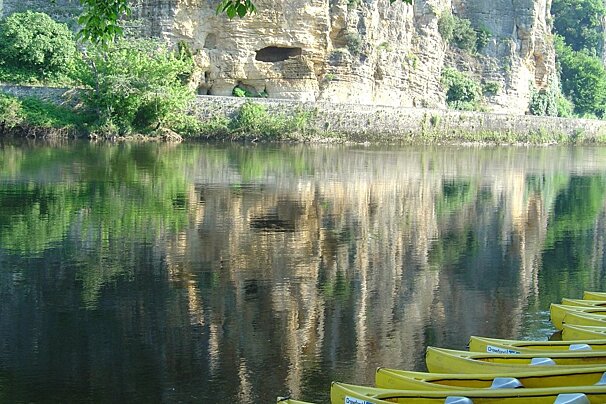
Offering various routes along the Dordogne river to enjoy the sights of the Perigord Noir region. Discover hidden treasures during a relaxing journey down the river.
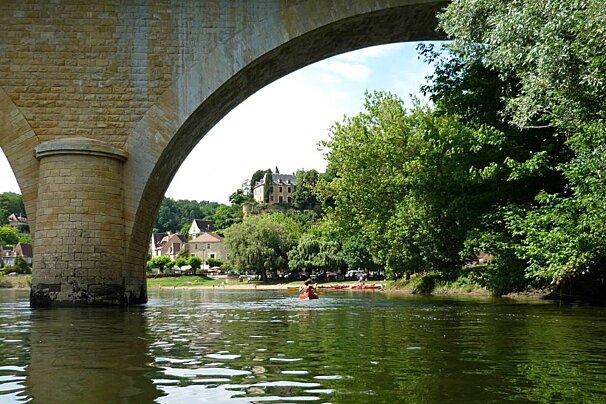
With family, in a group, with friends and at any age, you can explore at your own pace two of the most beautiful rivers of Périgord.

For over 25 years this park has allowed visitors to come into close (and safe!) encounter with crocodiles, cobras and more than 200 other reptiles and venomous species.

This is a great outing for a family as you will have the chance to see these magnificent wild boar in a natural environment where they forage and feed in the forests of oak and chestnut trees.
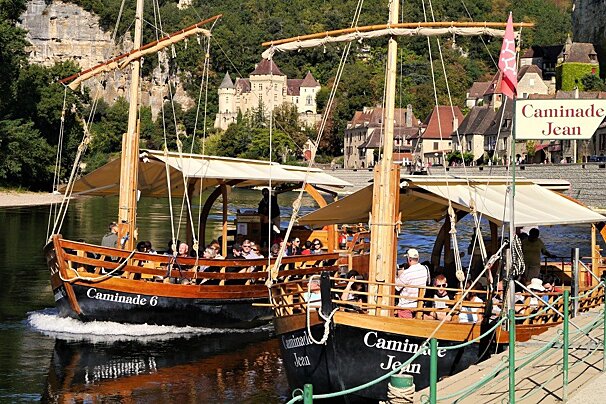
Travel along the valley of the five chateaux on traditional barges and discover some of the most beautiful sites.

The dining rooms allow for views of the surrounding vineyards and rolling hills. Drinks can also be enjoyed in the small library or among the chestnut trees.

This elegant and sophisticated two Michelin star restaurant offers creative dishes designed by chef Cédric Béchade, who plays with colours and textures in his cuisine.

In a dining room graced with elegance and class, you can savour a meal while looking out to the surrounding Lay Valley, vineyards and Chateau gardens. Internationally renowned, the 1 michelin star restaurant serves up refined cuisine based on the superior produce of the region.

The restaurant boasts an innovative menu with a focus on fine local fare and seemless service. The very word Les Merles stands for honesty and delightfulness, which is reflected throughout the dining experience.

Part of the successful Edward 1er Hotel, the restaurant has a lot to live up to. Welcoming and professional staff greet you into the small 28 seat dining room and you are sure to be delighted by the experience and attention to detail from start to finish.

Large bright dining rooms and a flowery terrace set the scene for a delicious meal. In the winter your food can be enjoyed in front of the large open fire place and in the summer, out on the open terrace looking out over town and surrounding countryside.
This huge cave is one of the largest in the region and contains over 250 prehistoric animal paintings and drawings. Once occupied by bears, whose paw marks are visible on the walls, the etchings and drawings in the Grotte de Rouffignac are mainly mammoth-themed despite few mammoth bones having been found in southwest France. Accessible only by electric train in order to ensure their preservation, they are an incredible example of prehistoric art.
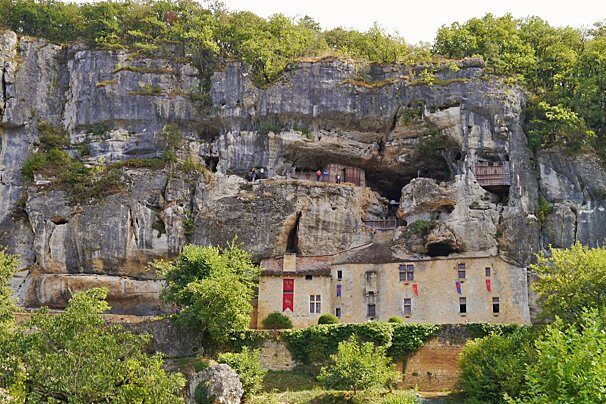
This is an impressive honey-stoned troglodyte house built within large cave shelters. Its relatively modest exterior disguises the space within, which is decorated in a grand style, with original medieval furniture and tapestries.
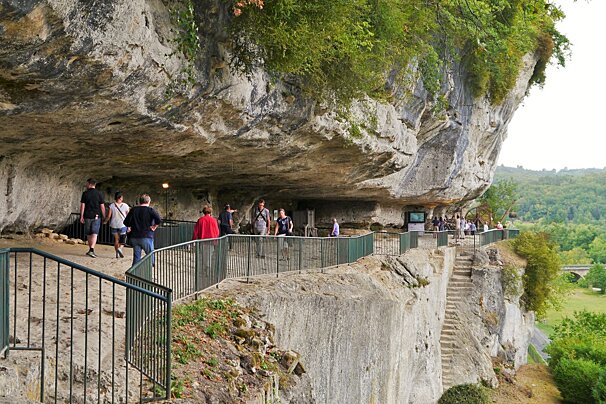
These impressive caves and cliff face are situated halfway between les Eyzies and Montignac-Lascaux.
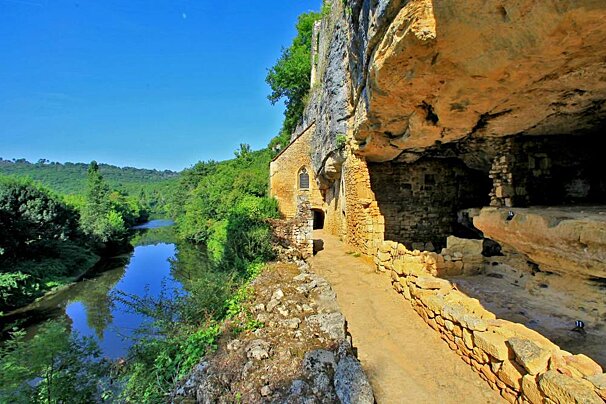
This village on the Vézère river has been inhabited since prehistoric times when cavemen dwelled in the rock shelters offered in the sides of the cliffs.
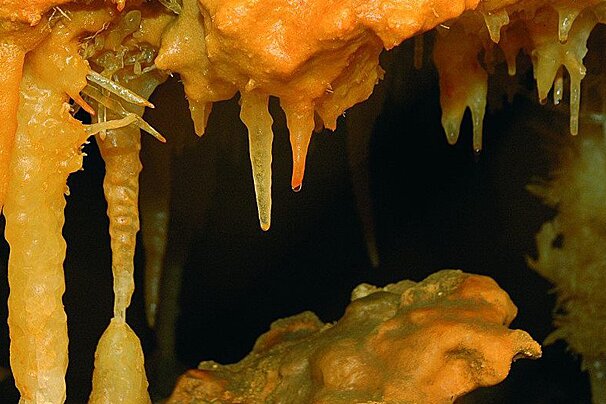
The Grand Roc cave, registered with UNESCO as a World Heritage site, is a true mineral forest, including crystallizations, calcite flows, stalactites, stalagmites, pillars, eccentric stalactites, draperies, and more.

This rock shelter was discovered in the late 19th century, but its fascinating engravings of prehistoric fish were not identified for some 20 years.

The town and the surrounding prehistoric sites have been designated a UNESCO World Heritage site. Nearly 150 sites have already been discovered and contain significant finds dating back as far as the Middle Stone Age - about 300,000 to 40,000 years ago.

The pretty old town of Montignac serves as a good base for visiting the nearby prehistoric caves.

The relaxed town of Le Bugue sits on the river Vézère where it's joined by the Doux. A more tranquil base for exploring the region, it has some pretty, narrow streets and a bustling market twice a week.

Limeuil is a picturesque old village which features on the list of 'Les Plus Beaux Villages de France'. It has a pretty park on the top of the hill and some ruins from its medieval past.
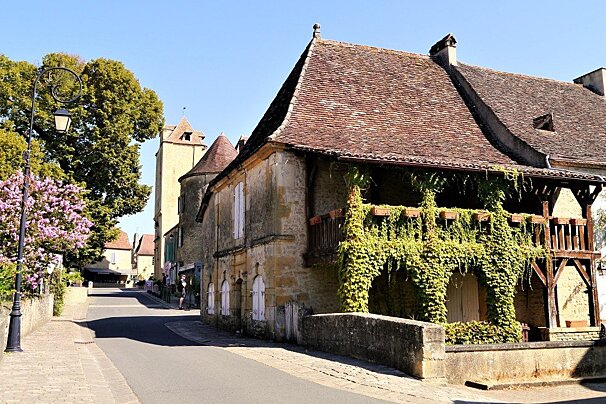
Trémolat was originally home to a 6th century hermit, Saint-Cybard, before monks built their monastery here in the 9th century.

Standing out as one of the most charming towns in the region, this medieval dwelling remains much as it was when it was built in the 14th century.